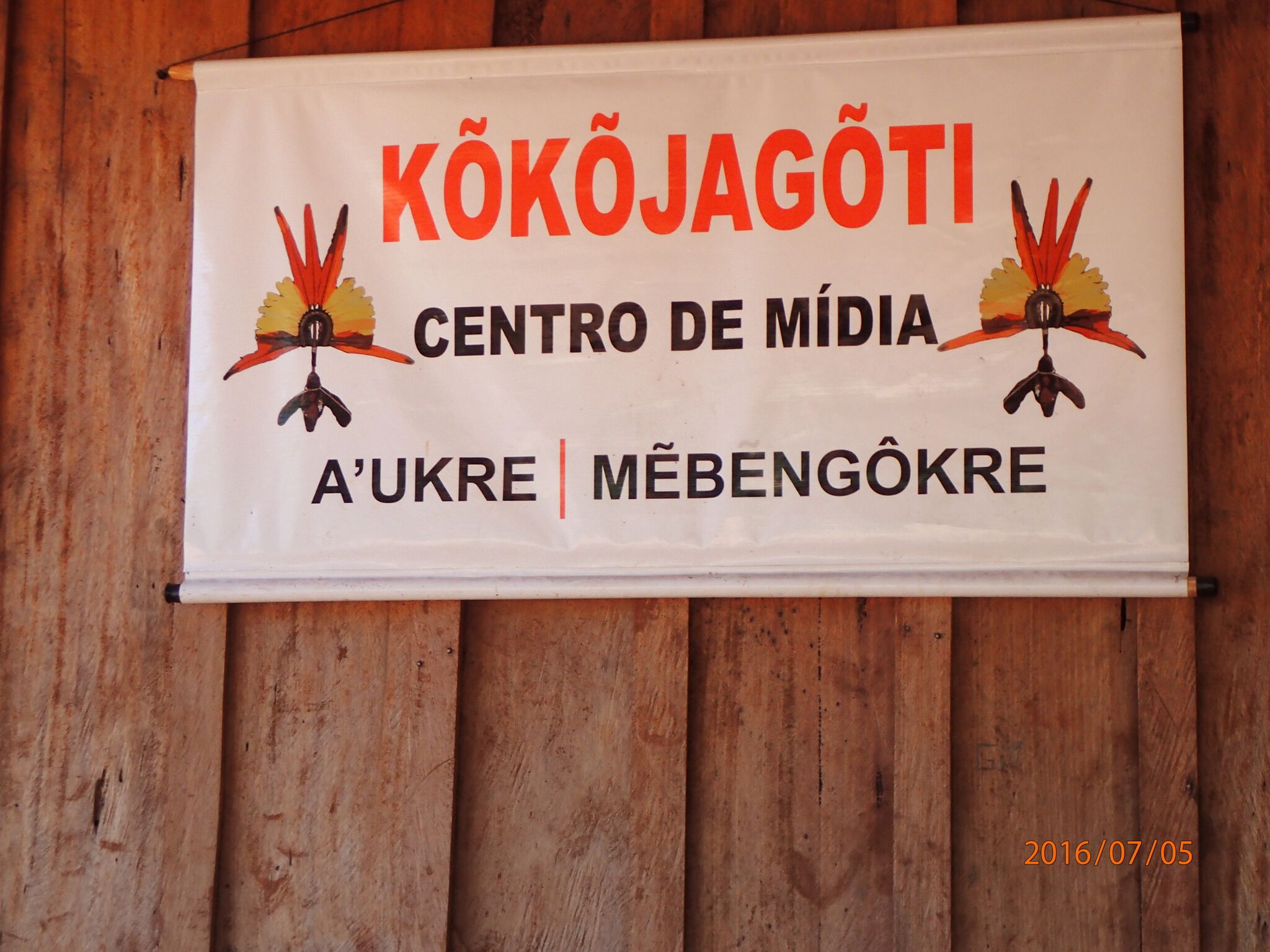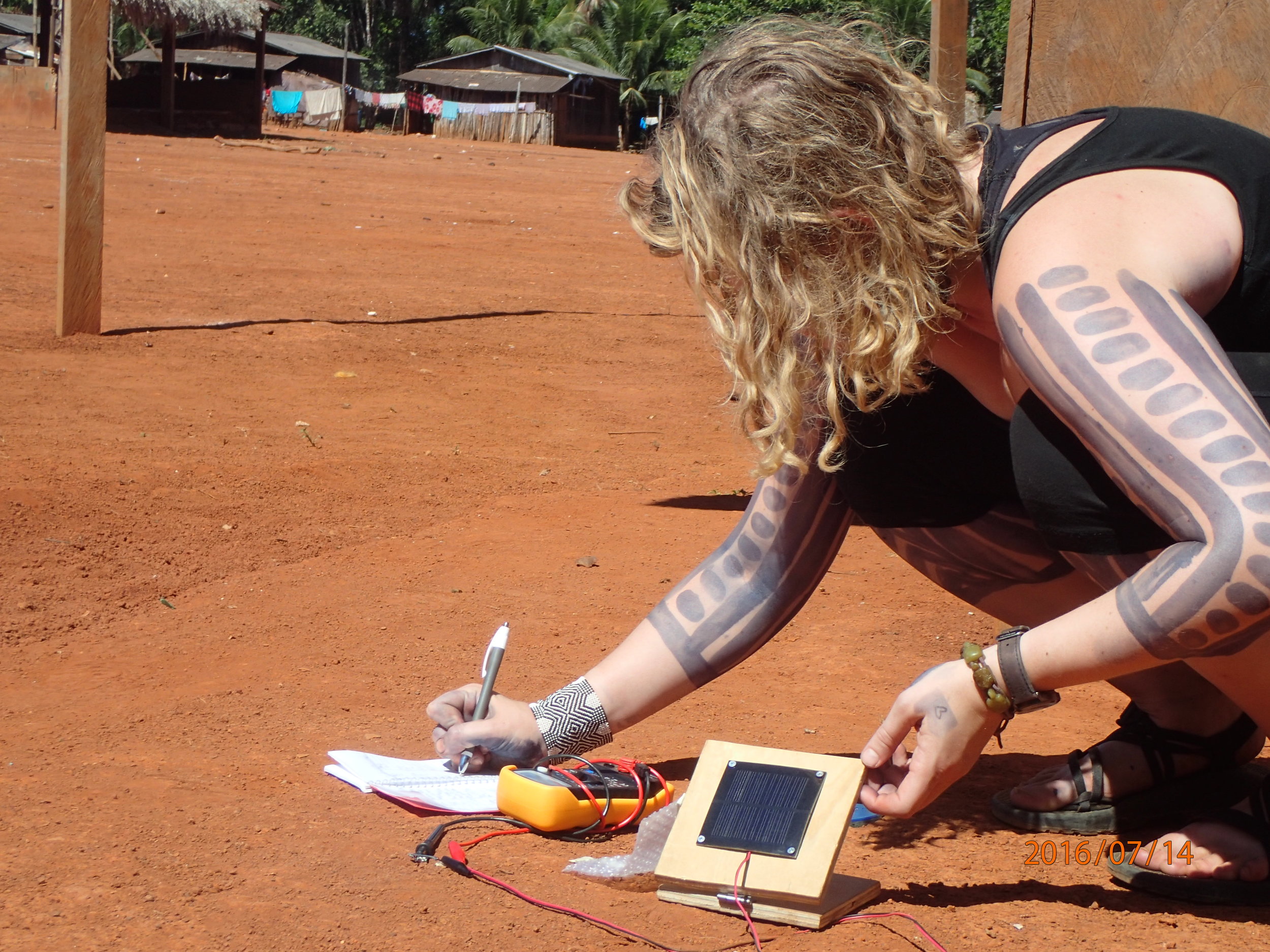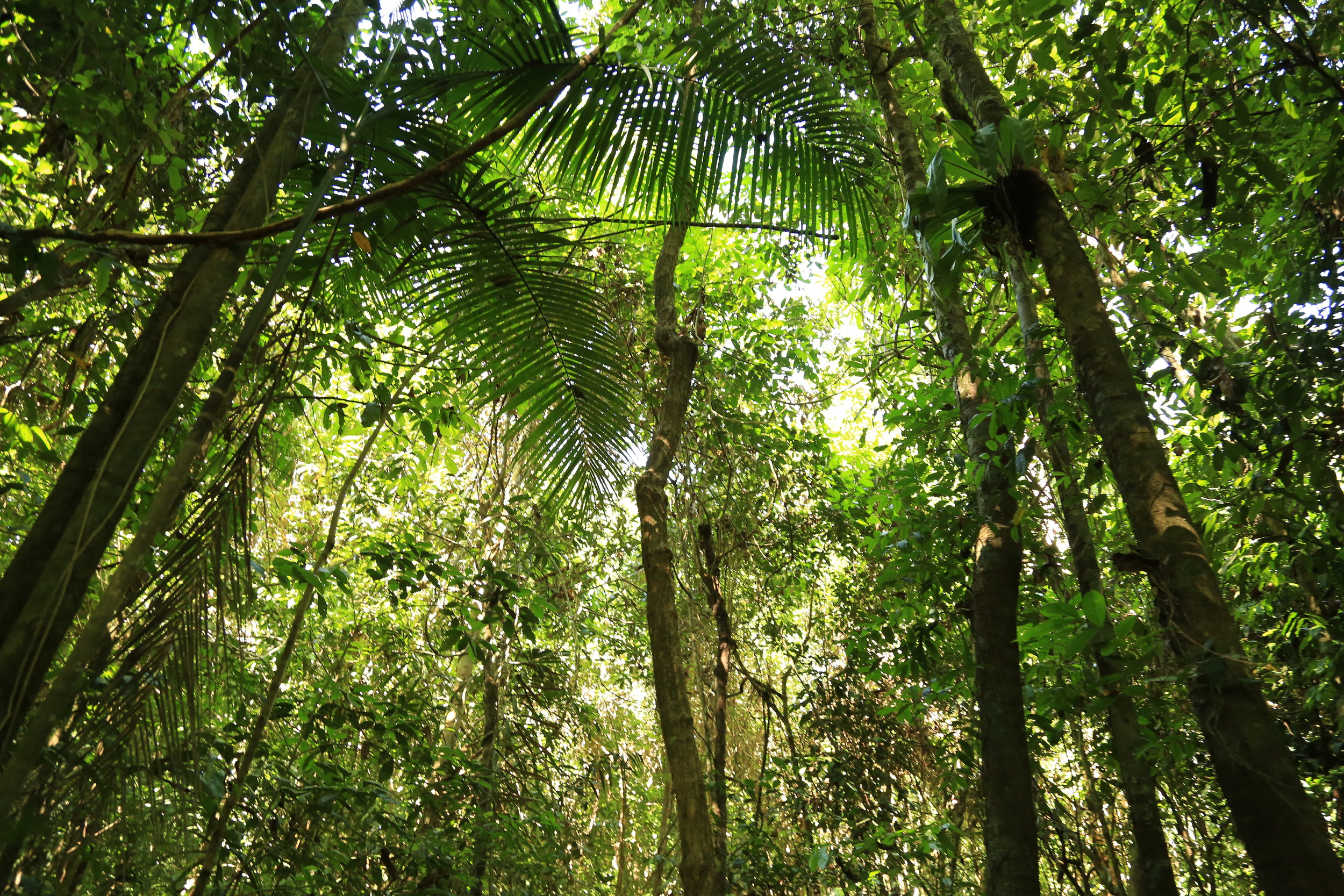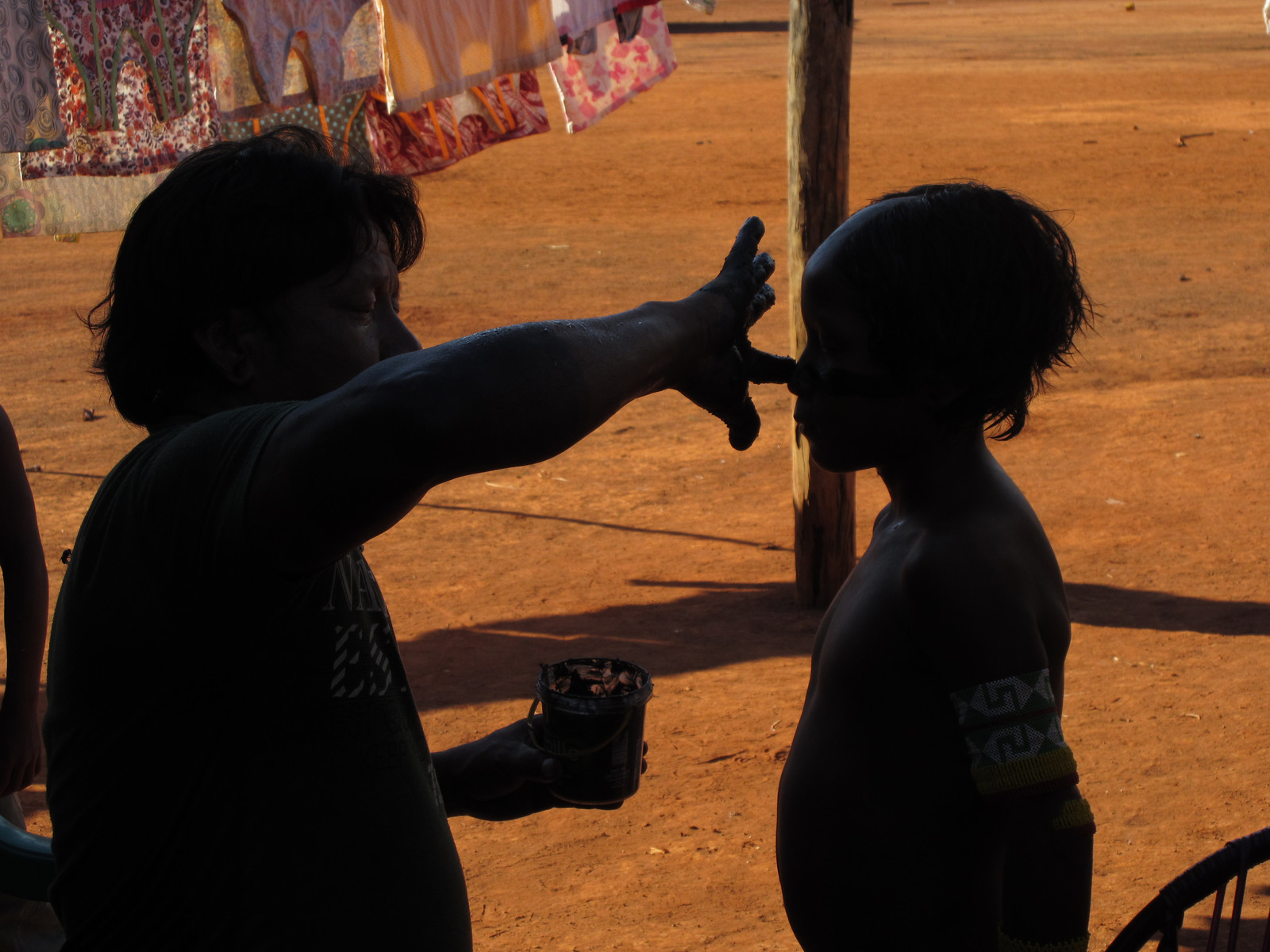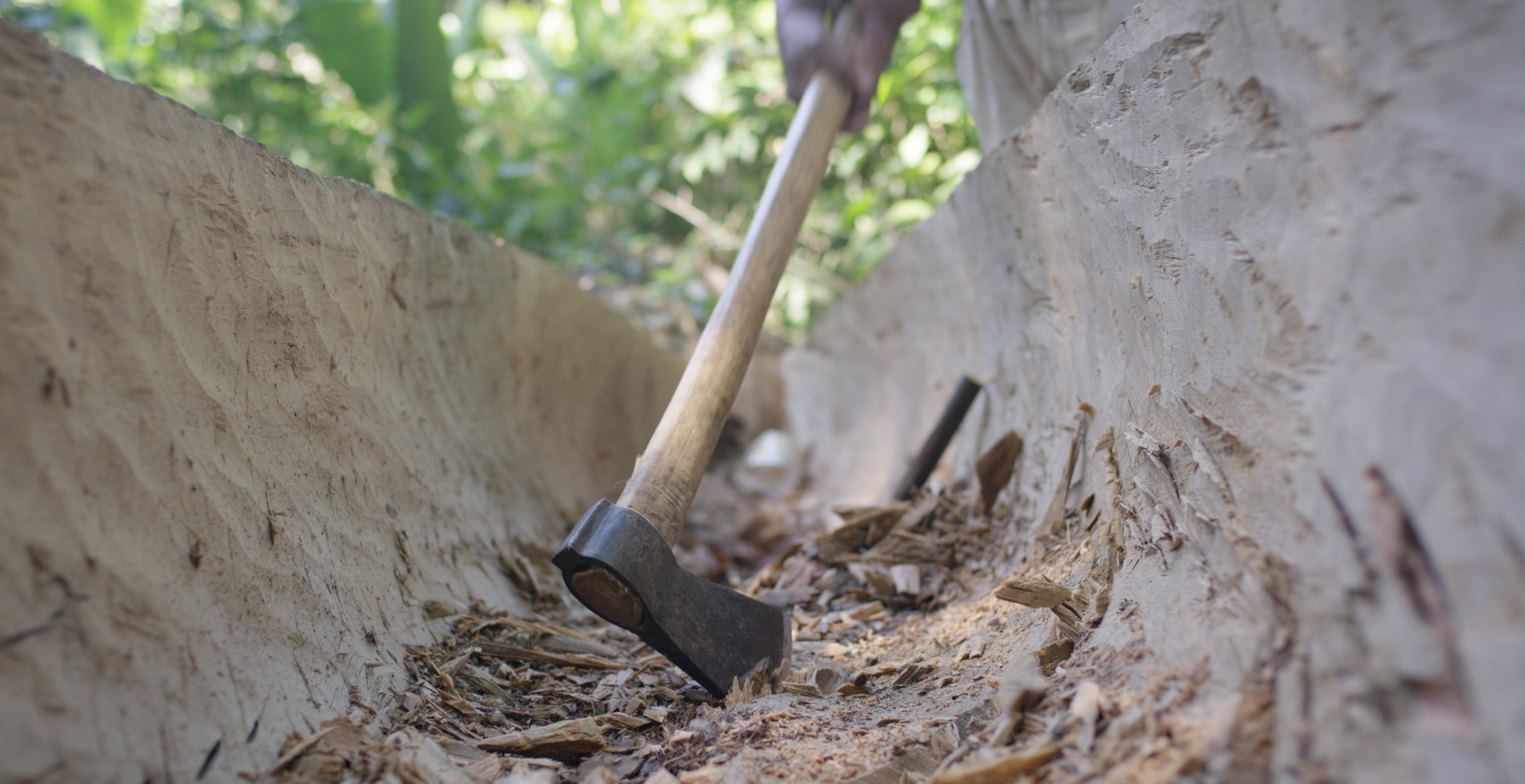A Guest Post by Purdue Alumnus Kaitlin Harris, Anthropologist and Environmental and Ecological Engineer
A blog that features news about the people and stories behind the filmmaking initiatives and filmmakers who are part of Kôkôjagõti, a Kayapó-Mebêngôkre media center and collective in the Brazilian Amazon.
From left to right: Kôkôjagõti banner during the media center's inaugural opening; front angle of media center; computer use in media center; blog author Kaitlin Harris working with equipment.
~*~
Established at Purdue University in 1995, EPICS (Engineering Projects in Community Service) is a service-learning program that engages engineering students with local, national, and international communities to create solutions to community-identified problems. The program supports a student lead classroom where over thirty undergraduate teams work on multi-semester projects with faculty advisors, community partners, and peers from different disciplines. Taking a human-centered approach, the EPICS design process aims to keep community partners’ needs at the forefront of design ideation, purpose, and reiteration.
The Kôkôjagõti Project became a part of EPICS’s Global Alternative Power Solutions (GAPS) Brazil team in the spring of 2015. The long term goal of the EPICS GAPS Brazil team is to partner with A’Ukre in coordination with the Protected Forest Association (Associação Floresta Protegida [AFP]) and Federal University of Uberlândia (UFU) to help equip and support a sustainable media center system, including programming a flexible operating system for six computers. Through this, the team was able to support the A’Ukre community, help expand its technological capacities, and aid its movement towards media sovereignty. Over the past two years the GAPS Brazil team has worked on a prototype hardware and software system, and virus and solar power troubleshooting. It has additionally conducted research investigations into solar, virus, and storage options, knowledge sharing, and various design projects to support the Kôkôjagõti center’s filmmakers and the community as a whole. The team is advised by Purdue professors Dr. Laura Zanotti, Dr. Bill Oaks, Dr. Jeff Gray. Dr. Diego Soares (UFU) serves as the Brazilian co-adviser. Purdue anthropology PhD student Ingrid Ramón Parra also provides guidance and support as a project research assistant, having conducted her doctoral work in A’Ukre.
EPICS GAPS Brazil team members began the project by asking, “What are the possibilities for a Kayapó media center in the Brazilian Amazon?” The team imaged and explored what a media center could look like, what it would need, how it would be powered, and who would use it. During this time, it was vital for team members to understand the context and importance of the media center in A’Ukre. Student participation in the yearly field course led by Zanotti and Soares was essential for informing decisions and fostering understanding on the Brazil team with students who were spatially removed from A’Ukre.
Team members’ individual research on Kayapó culture raised concerns as to how the Kayapó are portrayed through the world’s media lens. These were brought to the forefront of team discussions and opened the door for conversations surrounding ethics and practice. Viewing ethics from both engineering and anthropological perspectives, the team was able to identify past exploitation of Kayapó images and unwanted image circulation. Learning about the history of Kayapó digital activism, the importance of cultural heritage, and how these support Kayapó livelihoods created a foundation for design decisions in the first semester. Team discussions changed how students thought of the media center, clarified the need for the media center’s technology to be designed in a way that focused on user autonomy and that would allow users to protect and control community images.
One of the major challenges the EPICS Brazil team faced was fusing two operating systems together in order to optimize the Kayapó filmmaker and community use of the media center’s six computers. As the team conducted their research, it became evident that choosing an operating system would be an important decision that would directly impact the future independence or reliance of the media center. For example, using a Windows or Apple operating system would mean the media center would be subject to costly updates, prescribed software, and lack of collaboration across platforms. To avoid these issues, the team decided that they needed to provide the center with a unique, flexible, and adaptable operating system while still maintaining known computer software. In the end, the computers were partitioned to use both Windows and Linux operating systems. The team decided that familiarity of Windows programs mixed with Linux’s flexibility of free media software and updates, system adaptability and customization, and a strong resistance to computer viruses would be ideal for individual filmmaker and community use. The computers were transported to A’Ukre in July of 2015 and served as the prototype hardware system for ten filmmakers in the community. The EPICS team then reconvened in August 2015 to focus on a new set of design questions for the upcoming year: How might we design anti-virus updates without constant access to internet updates? How might the media equipment and space be sustainably powered? How can the media center manage the challenge of digital space?
Serving as project manager for three semesters and traveling to A’Ukre in the summers of 2014 - 2016 were some of the most extraordinary and important moments of my time at Purdue. As a part of the EPICS team that was able to see our work implemented in A’Ukre, I received an immense amount of guidance and experience in putting a community’s needs and perspectives at the forefront of design while integrating anthropological methods into an engineering team's process. These experiences impressed upon me the importance of pursuing simultaneous degrees in anthropology and environmental and ecological engineering. The success of Kôkôjagõti has strengthened my understanding in creating sustainable projects through diverse collaboration, long-term partnerships, knowledge sharing, and through a holistic understanding of place and community.
It is often difficult to explain the most wonderful and unique experience of being in A’Ukre. I am forever changed and grateful to have taken part in this intricate web of people and spaces. A’Ukre is a place made extraordinary not only by the surrounding environment but by the Kayapó who repeatedly welcomed us into their home. I would not have experienced such rich relationships and learning if it had not been for the community-researcher-student network that serves as the foundation for the EPICS program and Dr. Zanotti’s field course. The opportunity granted me to through EPICS to continue working with this specific Kayapó community, despite the thousands of miles between Indiana and Brazil, was a daily and joyful reminder of the agency I had as a student and individual to support and think about my friends in A’Ukre.
From left to right: forest canopy around A'Ukre; community work tools; Kayapó adult applying tribal paint to child; carving a canoe
Kaitlin Harris is trained as an environmental engineer, and anthropologist at Purdue University. Kaitlin is passionate about indigenous rights, environmental justice, and mitigating the impact of climate change on livelihoods. She has worked with interdisciplinary design teams on community projects in one Kayapó community in the Brazilian Amazon and collaborated on research teams in the U.S., Brazil, and Switzerland. She is currently working in Chicago, learning Portuguese, and trying to do some good in the world.
